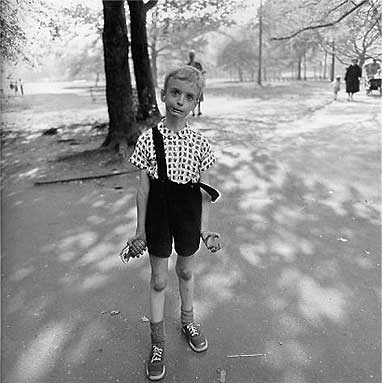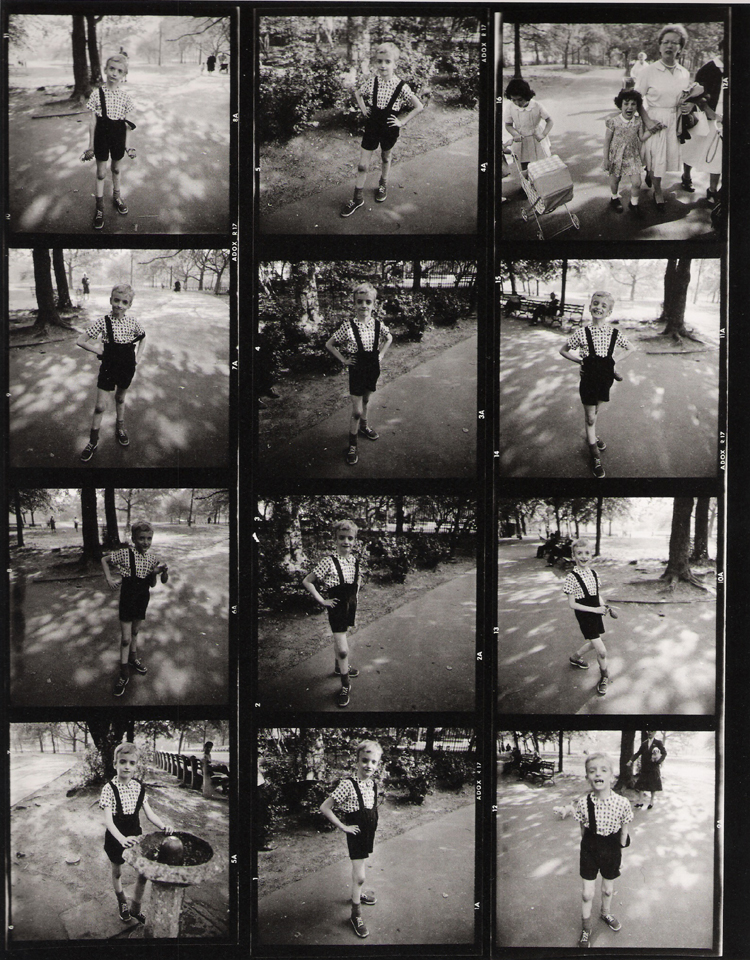
Image credit: Diane Arbus
As part of the final project for our “Rhetoric of Social
Documentary” class my students will be completing a brief documentary film on a
local issue and so we spent this week talking about the ethics of documentary
filmmaking and the discomfort many people feel in having their picture
taken. We began the class with a
discussion of Susan Sontag’s chapter “America, Seen Through Photographs,
Darkly” from On Photography in which she
considers the work of Diane Arbus and the shift in photography away from lyrical
subjects toward material that is “plain, tawdry, or even vapid” (Sontag,
28). Sontag explores the artist’s
decision to focuses on people she terms “victims” or “freaks” and argues that Arbus attempts to suggest a world in which we are all isolated
and awkward.
One of my students seized on Sontag’s argument about Arbus’ awkward depictions of her subject and suggested that feeling awkward while having a
portrait made is common to all of us but that looking awkward in a portrait is
seldom the goal of the sitter.
This comment led us to consider whether Arbus might be exploiting her
subjects or, at the very least, seeking their least flattering image amongst
many shots in a series. As a
class, we discussed the photograph of the child above with respect to the issue
of consent from the people we photograph.
The question of consent, however, brought us to question what it might mean
to depict our subjects in a manner at odds from their own desired
self-presentation—we looked at the contact sheet that shows the many portraits
from which Arbus might have chosen and compared these to the one she did
select.

Image credit: Diane Arbus
The relationship between the intentions of the person
photographed and the photographer is a sticky one for documentary filmmakers
and my students grappled with how to balance the ethics of taking someone’s
picture (or mercilessly editing someone’s interview—we looked at some Michael
Moore footage) with the goal of making an argument about a social issue. Sontag reminds us that the camera can
function as “a kind of passport that annihilates moral boundaries and social
inhibitions, freeing the photographer from any responsibility toward the people
photographed”—a claim that my students really struggled with in our discussion
of ethical image-making.
Posing for a photographic portrait is always uncomfortable. Barthes notes the anxiety that
accompanies this experience and argues that in the act of posing, before the
photograph is even taken, "subjects transform [themselves] in advance into an
image" (Camera Lucida, 10). As a class, we considered the differences between posed portraits and snapshots and the possibilities for accounting for the goals and preferences of our subjects. Arbus’ snapshot portraits seem as
uncomfortable as her static posed compositions. There seems no guarantee that the photographic genre will
protect the wishes of those photographed. In fact, in many cases of social documentary the
larger argument is in direct conflict with the desired self-representation of
the subjects. Tricky territory
here for my students and I am looking forward to watching them craft their
larger rhetorical claims while keeping in mind the ethics of image-making.
Comments
always already outside our control
And, of course, one of the definitive characteristics of the photograph is that it exceeds and escapes our desire/ability to control it. In order for a photograph to be what it is-- a replicated image capable of existing apart from the thing it figures-- it must be separable and therefore always (at least potentially) separate from its subject. If our image in the photograph-- its appearance, its circulation, the manifold intentions of photographers, subjects, viewers, students, academic bloggers, etc.-- were subject to or dependent on our presence or intentions, then it would not be the kind of thing that exists apart from us and could not survive our absence. This is, of course, why (as numerous theorists of the photograph have said) the photograph always includes our death. It is a thing that by its nature exists apart from us and can continue to exist after us, and its necessary independence and durability presuppose our mortality. In similar fashion, the very form of the medium also presupposes that it will not and never could protect the wishes of those being photographed.